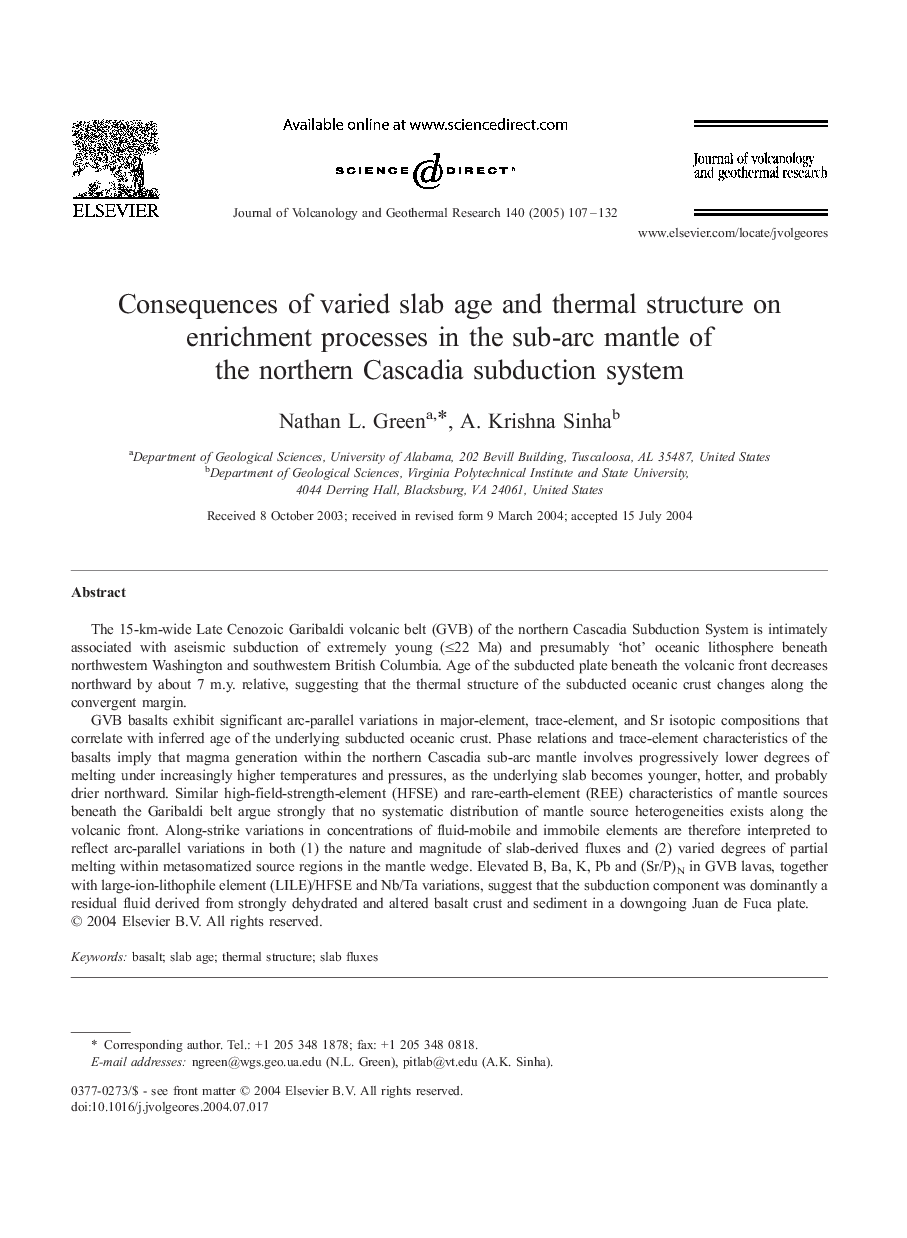| Article ID | Journal | Published Year | Pages | File Type |
|---|---|---|---|---|
| 9531152 | Journal of Volcanology and Geothermal Research | 2005 | 26 Pages |
Abstract
GVB basalts exhibit significant arc-parallel variations in major-element, trace-element, and Sr isotopic compositions that correlate with inferred age of the underlying subducted oceanic crust. Phase relations and trace-element characteristics of the basalts imply that magma generation within the northern Cascadia sub-arc mantle involves progressively lower degrees of melting under increasingly higher temperatures and pressures, as the underlying slab becomes younger, hotter, and probably drier northward. Similar high-field-strength-element (HFSE) and rare-earth-element (REE) characteristics of mantle sources beneath the Garibaldi belt argue strongly that no systematic distribution of mantle source heterogeneities exists along the volcanic front. Along-strike variations in concentrations of fluid-mobile and immobile elements are therefore interpreted to reflect arc-parallel variations in both (1) the nature and magnitude of slab-derived fluxes and (2) varied degrees of partial melting within metasomatized source regions in the mantle wedge. Elevated B, Ba, K, Pb and (Sr/P)N in GVB lavas, together with large-ion-lithophile element (LILE)/HFSE and Nb/Ta variations, suggest that the subduction component was dominantly a residual fluid derived from strongly dehydrated and altered basalt crust and sediment in a downgoing Juan de Fuca plate.
Keywords
Related Topics
Physical Sciences and Engineering
Earth and Planetary Sciences
Geochemistry and Petrology
Authors
Nathan L. Green, A. Krishna Sinha,
